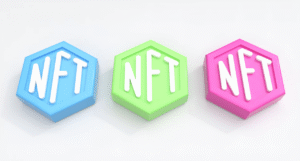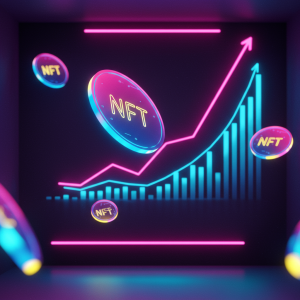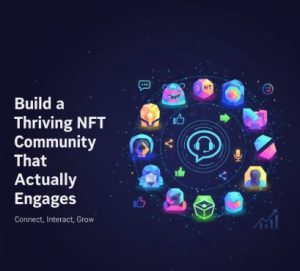NFT Drop Strategies: The Art of Limited vs. Open Edition Releases

The method chosen for releasing digital collectibles fundamentally shapes an NFT project’s trajectory, community development, and long-term market perception. As the digital collectibles ecosystem matures, creators face increasingly nuanced decisions about distribution mechanisms. The choice between limited edition scarcity and open edition accessibility represents perhaps the most consequential strategic decision facing artists and brands entering this space. Each approach carries distinctive advantages and potential drawbacks that warrant careful consideration.
The Psychology of Scarcity and Abundance
The limited edition model draws power from fundamental psychological principles that have influenced collecting behaviors throughout human history. When something exists in deliberately constrained quantities, we instinctively assign it greater value. The knowledge that only a specific number of items will ever exist creates urgency around acquisition decisions. This scarcity-driven valuation has fueled countless successful collectible markets from rare baseball cards to limited pressing vinyl records.
In digital contexts, this psychology operates even more powerfully because perfect digital reproduction would otherwise make scarcity impossible. The blockchain’s ability to verify authentic ownership of specifically numbered editions resurrects scarcity in an environment of potential infinite reproduction. This technological innovation enables digital artists to create genuinely scarce works for the first time.
Conversely, open edition approaches leverage different psychological principles. Accessibility fosters broader participation, allowing communities to form around shared appreciation rather than exclusive ownership. The emphasis shifts from possession to participation, often creating vibrant communities with lower financial barriers to entry. This democratic approach aligns with values prevalent in digital culture, where information sharing and accessibility traditionally surpass exclusivity in importance.
The tension between these approaches mirrors broader cultural conversations about exclusivity versus accessibility that extend far beyond the NFT space. Choosing between them requires creators to consider not just market dynamics but their fundamental artistic and community-building philosophies.
Limited Edition Strategies and Market Dynamics
The restricted supply inherent in limited edition drops creates distinct market behaviors worth examining through specific examples and patterns emerging over time.
Primary market pricing strategies vary significantly across limited edition projects. Some creators set relatively affordable initial prices to reward early supporters, allowing the secondary market to determine true value. Others attempt to capture more value upfront through higher mint prices or auction mechanisms. The Foundation platform pioneered auction-based primary sales that effectively discover market prices while generating excitement through time-limited bidding competition.
Secondary market liquidity often correlates strongly with edition size, though this relationship proves more complex than many initially assumed. Extremely limited drops (editions under 100) sometimes struggle with liquidity despite their rarity, as few pieces circulate. Mid-sized editions (500-3000) frequently demonstrate optimal secondary market activity, balancing sufficient scarcity with adequate trading volume. Understanding this relationship helps creators optimize edition sizing for specific project goals.
Collection completion dynamics drive interesting market behaviors in limited edition series. Collectors seeking to complete sets often pay premiums for specific pieces they need, creating price discrepancies between visually or conceptually similar works based purely on collection mechanics. Thoughtful creators leverage this psychology by designing collections with completion incentives while ensuring individual pieces maintain standalone value.
Rarity mechanics within limited collections add further complexity. Many successful projects incorporate tiered rarity systems where certain attributes or features appear less frequently, creating “rare” pieces within already limited collections. These layered scarcity mechanisms can drive engagement as collectors hunt particularly scarce variants. However, overcomplicating rarity structures risks confusing casual collectors while potentially creating disappointment if common variants seem undistinguished.
At NFTMarketo, our analysis of limited edition performance indicates that optimal edition sizing depends heavily on creator reputation, artwork quality, and community engagement strategies. Emerging artists often benefit from smaller editions that sell through completely, while established names can support larger edition counts without diluting perceived value.
Open Edition Approaches and Community Building
Open edition strategies have evolved substantially from their initial reception as less desirable alternatives to limited releases. Innovative approaches have demonstrated their unique advantages for certain creator objectives.
Time-bounded open editions have emerged as particularly effective models. These drops remain unlimited during a specific window (typically 24-48 hours), after which the edition closes permanently. This approach creates urgency while allowing anyone interested to participate, balancing accessibility with eventual scarcity. The final edition size emerges organically from actual demand rather than arbitrary limits, often revealing valuable market information.
Pricing strategies for open editions typically emphasize accessibility, with lower entry points than comparable limited releases. This approach prioritizes widespread distribution over maximizing primary sale revenue. The economic model often assumes that broader distribution creates larger potential audiences for future releases and auxiliary revenue streams.
Community development advantages represent perhaps the strongest argument for open edition approaches. By removing supply constraints, these models allow anyone enthusiastic about a project to participate directly rather than being priced out. This inclusivity can create more diverse, engaged communities than those formed around high-priced exclusive releases.
Surprising market outcomes have challenged conventional wisdom about open editions. While they typically command lower secondary market prices than limited releases, exceptional open editions from highly sought-after creators sometimes achieve remarkable valuations despite unlimited supply during their initial release. These results suggest that perceived artistic significance and creator reputation can occasionally outweigh raw scarcity in driving collector interest.
Hybrid Approaches Gaining Traction
The binary choice between strictly limited or completely open editions represents a false dichotomy. Innovative creators increasingly implement sophisticated hybrid approaches that capture benefits from both models while mitigating their respective disadvantages.
Tiered release structures offer particularly elegant solutions. These designs include limited premier editions with special features alongside more accessible open editions of related works. This structure allows price-insensitive collectors to acquire exclusive versions while enabling broader participation through more accessible variants. When thoughtfully executed, these approaches satisfy different collector segments without cannibalizing either market.
Dynamic pricing mechanisms represent another intriguing hybrid approach. Some drops feature prices that increase as quantities sold rise, creating natural supply regulation through economic mechanisms rather than arbitrary caps. These systems allow markets to find equilibrium points between accessibility and exclusivity.
Edition fractionalization enables another form of hybridization, where limited edition works are divided into multiple ownership shares. This approach maintains scarcity at the whole-item level while enabling broader participation through partial ownership. While technically complex, these models potentially bridge exclusive and inclusive approaches in innovative ways.
Community-determined editions represent perhaps the most interesting emerging hybrid. These models allow community voting or other participation mechanisms to determine final edition sizes, shifting curation power from creators to collectors. This approach aligns edition size with actual demand while fostering community engagement through the decision process itself.
Strategic Considerations for Creators
Creators navigating edition strategy decisions should consider several key factors that influence optimal approaches for their specific circumstances and objectives.
Career stage significantly impacts appropriate strategies. Emerging artists typically benefit from limited editions that sell through completely, establishing market confidence and collector relationships. Mid-career artists might effectively alternate between limited and open approaches for different project types. Established creators with strong collector bases can successfully implement either model, with decisions based more on conceptual fit than market necessity.
Artwork characteristics naturally influence edition strategy. Highly detailed, labor-intensive digital works often align conceptually with limited editions that honor their craftsmanship. Generative or algorithm-based projects might better match open edition approaches that showcase their variability across many instances. Conceptual alignment between content and distribution method creates coherence that collectors recognize and appreciate.
Community building objectives should significantly influence edition decisions. Projects prioritizing tight-knit collector communities might prefer strictly limited editions that create shared experiences among a specific group. Those seeking broad impact and accessibility might choose open editions that minimize barriers to participation. Thoughtful analysis of community goals should precede edition size decisions rather than following market trends blindly.
Long-term revenue models warrant particular consideration. Limited editions typically maximize primary sale revenue but constrain community size. Open editions may generate lower initial returns but create larger potential audiences for future releases and auxiliary revenue streams like merchandise or experiences. The appropriate balance depends on specific creator circumstances and business models.
Technological Evolution and New Possibilities
Emerging technologies continue expanding possibilities beyond traditional edition strategy limitations, creating new options for thoughtful creators.
Dynamic NFTs enable editions that evolve over time based on specific triggers or holder actions. These technologies potentially bridge limited and open approaches by allowing initial editions to transform in ways that create different scarcity mechanics over their lifespans. Such approaches satisfy both initial accessibility and eventual differentiation between items.
On-chain generation capabilities continue advancing rapidly, enabling sophisticated generative drops that create unique items within coherent collections. These technologies blur distinctions between limited and open approaches, as each item remains individually unique while overall quantities might follow either limited or open models.
Cross-chain compatibility increasingly allows creators to implement different edition strategies across various blockchain environments, potentially addressing different collector segments through tailored approaches on each platform. This technological flexibility enables more nuanced market segmentation than previously possible.
Smart contract innovations continue introducing novel distribution mechanisms that transcend traditional edition thinking entirely. Time-locked releases, achievement-based minting, and interaction-dependent availability represent just a few emerging approaches made possible by advancing smart contract capabilities.
Conclusion
The choice between limited and open edition strategies transcends simple supply economics to encompass fundamental questions about creative intent, community values, and collector relationships. The most successful drops align edition strategy with artistic vision, community objectives, and market realities rather than following trending formulas.
For creators entering this space, thoughtful consideration of these factors leads to more authentic and ultimately more successful NFT releases than blindly adopting currently popular approaches. The market increasingly rewards intentional alignment between content and distribution method over artificial scarcity or trendy release mechanisms.
The evolution of NFT drop strategies continues accelerating as creator sophistication grows and technological capabilities expand. We likely stand at the beginning of an era that will produce increasingly nuanced approaches transcending simple binary choices between limited and open editions. The most innovative creators will likely combine elements from both approaches in ways that serve their unique artistic visions and community objectives.
The fundamental tension between exclusivity and accessibility will remain a defining characteristic of NFT strategy conversations. However, emerging hybrid approaches increasingly demonstrate that this tension can produce creative synthesis rather than requiring absolute choices between opposing models. The future likely belongs to creators who navigate this balance with intentionality and authenticity rather than following established patterns.








